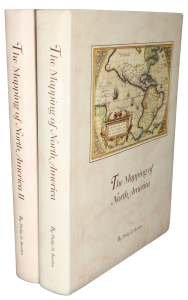Rare Maps and Prints
- World & Celestial
- North America
- West Indies, South & Central America
- British Isles
- British Isles
- English counties
- Large-scale
- Bedfordshire
- Berkshire
- Buckinghamshire
- Cambridgeshire
- Cheshire
- Cornwall
- Cumberland
- Derbyshire
- Devon
- Dorset
- Durham
- Essex
- Gloucestershire
- Hampshire
- Herefordshire
- Hertfordshire
- Huntingdonshire
- Islands
- Kent
- Lancashire
- Leicestershire
- Lincolnshire
- Middlesex
- Norfolk
- Northamptonshire
- Northumberland
- Nottinghamshire
- Oxfordshire
- Rutland
- Shropshire
- Somerset
- Staffordshire
- Suffolk
- Surrey
- Sussex
- Warwickshire
- Westmoreland
- Wiltshire
- Worcestershire
- Yorkshire
- Wales
- Scotland
- Ireland
- Western Europe
- Eastern Europe
- Middle East
- Africa
- Asia
- Australasia & Pacific
- Decorative Prints
- Title Pages
Mr. Philip D. Burden
P.O. Box 863,
Chalfont St. Giles, Bucks HP6 9HD,
UNITED KINGDOM
Tel: +44 (0) 1494 76 33 13
Email: enquiries@caburden.com
Robert Morden is arguably best known for the series of maps he produced for this, the first edition of Dr. Edmund Gibson’s translation of William Camden’s ‘Britannia’. Gibson (1669-1748) had first projected the work in 1692 when a Fellow of Queen’s College, Oxford. Gibson stated that the work was to go back to the original writing of Camden. Richard Gough wrote in his own edition in 1789 that Gibson’s edition was ‘the most compleat and faithful translation’. One of the more notable contributors was the diarist John Evelyn (1620-1706) who was a central figure of English intellectual and literary life.
The first Proposals were issued probably in 1692 by the publishers Awnsham and John Churchill and described a series of maps by Robert Morden. The Churchill’s had a reputation for producing quality works and this was to prove no exception. Gibson’s Preface states that ‘the Undertakers … spar’d neither pains nor expense, so they might contribute to the perfection of the Book, and the satisfaction of the Curious’. The ‘New Proposals’ dated 20 April 1693 announced significant changes most notably the addition of a series of plates of coins and a larger series of maps. It stated that ‘The Maps mentioned in the former Proposals … were not thought Large and Comprehensive enough, by some Judicious and Ingenious Gentlemen that assist in the Work, Who think it Proper and Necessary to have the Maps of every County full as Large as this Sheet will admit …’ The expense was a further £500 which increased the subscription from 26 shillings to 32s. It is evident that the smaller series of plates which had been composed might have even been partially engraved. A few years later Morden did in fact produce ‘The New Description and State of England’ with a smaller series of county maps. It is conceivable that these were drawn or engraved as early as 1693.
The maps compiled by Morden were sent off to local Gentlemen of each county for corrections and additions which were duly incorporated onto the map. Many of the plates show these early corrections, indeed some may even be found in two different states in the first edition. The maps also incorporated roads, largely derived from John Ogilby’s ‘Britannia’ published in 1675. They are the first large county maps to do so. The base map was the best which could be had, in many cases this meant those of Christopher Saxton or John Speed. However, some counties had more recent maps produced by cartographers such as Ogilby, William Morgan, John Seller and John Oliver. Even the recently published Greenvile Collins ‘Coasting Pilot’ was utilised to update the coastal detail. The maps are only the second published to incorporate degrees of longitude and latitude. The latter is generally taken from St. Pauls in London although those of Sussex and Yorkshire at least are taken from Greenwich. They are however the first to indicate in the upper margin the difference in local time from London. The maps in most cases bear more than one scale bar of distance. Beresiner (1983) pp. 157-60; Carroll (1996) no. 19; Chubb (1927) 113; ESTC R12882; Harley, J. B. (1972). ‘Introduction’ to ‘Camden’s Britannia 1695 by Robert Morden’ facsimile reprint; Shirley (2004) T.Camb 5a; Skelton (1970) 117; Tyacke (1978) nos. 237, 240-3, 248, 251 256-7, 262, 270 & 272; Worms & Baynton-Williams (2011).
Camden's Britannia, Newly Translated into English: with large Additions and Improvements
SOLD








